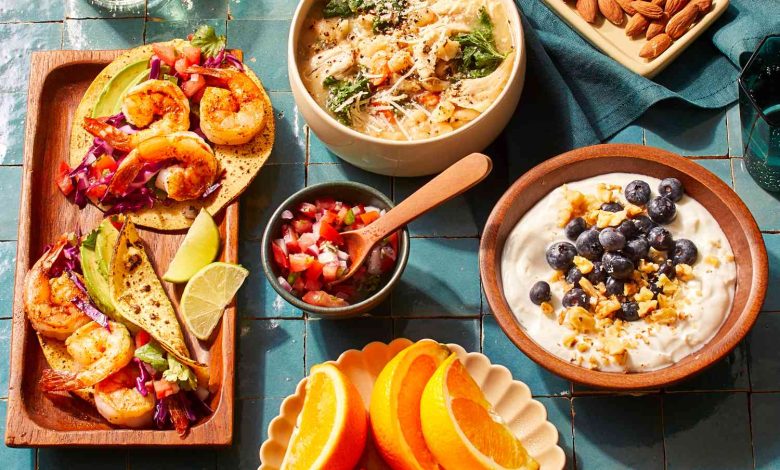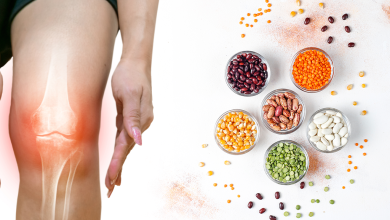A Dietitian’s 7-Day Diabetes Meal Plan to Support Healthy Aging

Managing diabetes while aging gracefully requires more than just taking medication—it’s about nourishing your body with the right foods to maintain energy, balance blood sugar, and protect long-term health. As we age, our metabolism slows, muscle mass decreases, and the risk of chronic diseases increases. For those with diabetes, this means that every bite matters.
To help you thrive, not just survive, this comprehensive 7-day diabetes meal plan—crafted by a registered dietitian—focuses on balanced nutrition, portion control, and foods that promote healthy aging. Whether you’re newly diagnosed, have lived with diabetes for years, or want to prevent complications, this plan will help you enjoy delicious, wholesome meals that stabilize blood sugar and keep you feeling your best.
Why a Specialized Meal Plan Matters for Diabetics and Aging Adults
As we get older, our body’s ability to use insulin efficiently tends to decline, making it harder to maintain stable blood glucose levels. At the same time, aging brings challenges like reduced muscle tone, slower digestion, and nutritional deficiencies.
A well-structured diabetes meal plan helps you:
- Regulate blood sugar levels throughout the day
- Maintain a healthy weight and prevent obesity-related complications
- Support cardiovascular health by managing cholesterol and blood pressure
- Preserve muscle mass and bone strength through protein and calcium-rich foods
- Promote longevity and vitality with antioxidants and anti-inflammatory nutrients
The key lies in balanced meals—combining lean proteins, whole grains, healthy fats, and plenty of fiber from vegetables and fruits.
Nutritional Principles for Diabetes and Healthy Aging
Before diving into the 7-day plan, it’s essential to understand the core nutritional principles behind it.
1. Prioritize Low-Glycemic Foods
Choose carbohydrates that release energy slowly to prevent blood sugar spikes. Examples include:
- Oats, quinoa, brown rice, lentils
- Non-starchy vegetables like broccoli, spinach, and zucchini
- Berries and apples for fruit options
2. Include Lean Protein in Every Meal
Protein helps regulate blood sugar, supports muscle health, and enhances satiety.
- Options: chicken breast, fish, eggs, tofu, beans, Greek yogurt
3. Choose Healthy Fats
Omega-3 fatty acids and unsaturated fats help protect heart health—a major concern for diabetics.
- Sources: salmon, walnuts, chia seeds, olive oil, avocado
4. Eat More Fiber
Fiber slows glucose absorption and supports digestion.
- Aim for 25–35 grams per day through vegetables, whole grains, beans, and fruits with skin.
5. Watch Portion Sizes
Even healthy foods can raise blood sugar if eaten in large amounts. Use the “plate method”:
- ½ plate non-starchy vegetables
- ¼ plate lean protein
- ¼ plate whole grains or starchy vegetables
6. Stay Hydrated
Dehydration can affect blood sugar control. Choose water, herbal teas, or infused water instead of sugary drinks.
7-Day Diabetes Meal Plan for Healthy Aging
Each day below includes breakfast, lunch, dinner, and snacks. The meals are nutrient-rich, portion-controlled, and focused on stabilizing glucose while promoting longevity.
Day 1: Balancing Energy and Blood Sugar
Breakfast:
- Greek yogurt parfait with chia seeds, blueberries, and a sprinkle of almonds
- 1 slice whole-grain toast
- Green tea
Snack:
- Apple slices with 1 tablespoon of peanut butter
Lunch:
- Grilled salmon with quinoa and steamed broccoli
- Side salad with olive oil and lemon dressing
Snack:
- 10 raw almonds
Dinner:
- Turkey chili with kidney beans, tomatoes, and bell peppers
- Side of roasted zucchini
Why it works:
Packed with fiber and protein, this day stabilizes blood sugar and delivers omega-3s for brain and heart health.
Day 2: Supporting Muscle Health
Breakfast:
- Scrambled eggs with spinach and tomatoes
- ½ avocado on whole-grain toast
Snack:
- Cottage cheese with sliced peaches (no added sugar)
Lunch:
- Lentil soup with a side of mixed greens and olive oil dressing
- 1 small whole-grain pita
Snack:
- A handful of walnuts
Dinner:
- Baked chicken breast with brown rice and sautéed green beans
Why it works:
This day includes ample protein to preserve muscle mass, plus fiber-rich lentils to maintain satiety.
Day 3: Antioxidant-Rich for Cellular Protection
Breakfast:
- Oatmeal made with unsweetened almond milk, topped with strawberries and flaxseeds
Snack:
- 1 boiled egg
Lunch:
- Tuna salad with mixed greens, cucumbers, and olive oil vinaigrette
- 1 small whole-grain roll
Snack:
- Handful of baby carrots with hummus
Dinner:
- Grilled shrimp stir-fry with bell peppers, broccoli, and brown rice
Why it works:
Loaded with antioxidants and fiber, this day’s meals combat inflammation and oxidative stress associated with aging.
Day 4: Heart-Healthy and Flavorful
Breakfast:
- Smoothie with spinach, protein powder, unsweetened yogurt, and a handful of berries
Snack:
- 1 small banana with almond butter
Lunch:
- Turkey and avocado wrap in a whole-grain tortilla
- Side of cucumber and tomato salad
Snack:
- Greek yogurt with ground flaxseed
Dinner:
- Baked cod with roasted Brussels sprouts and sweet potato mash
Why it works:
Heart-healthy omega-3s, fiber, and potassium-rich foods promote cardiovascular wellness.
Day 5: Boosting Brain and Nerve Health
Breakfast:
- Vegetable omelet with mushrooms, spinach, and onions
- Whole-grain English muffin
Snack:
- Mixed berries with a few almonds
Lunch:
- Chickpea and quinoa salad with olive oil and lemon dressing
Snack:
- Small serving of Greek yogurt
Dinner:
- Grilled chicken with roasted cauliflower and green beans
Why it works:
This day emphasizes magnesium and B-vitamins that support nerve health and cognitive function.
Day 6: Anti-Inflammatory Focus
Breakfast:
- Chia pudding made with almond milk and topped with raspberries and walnuts
Snack:
- Celery sticks with hummus
Lunch:
- Grilled salmon with asparagus and wild rice
Snack:
- A small apple
Dinner:
- Turkey meatballs with zucchini noodles and tomato sauce (low-sodium)
Why it works:
Packed with anti-inflammatory omega-3s, antioxidants, and fiber to support heart and joint health.
Day 7: Metabolic Support and Gut Health
Breakfast:
- Overnight oats with cinnamon, chia seeds, and blueberries
Snack:
- Handful of pistachios
Lunch:
- Black bean soup with a side of spinach salad
Snack:
- Low-fat cheese stick
Dinner:
- Grilled tofu or chicken with quinoa, kale, and roasted carrots
Why it works:
Cinnamon, fiber, and probiotics enhance insulin sensitivity and digestive health.
Tips to Make the Plan Work for You
Even the best meal plan won’t work if it’s not sustainable. Here are practical strategies to stay consistent:
1. Meal Prep Weekly
Set aside a few hours to cook grains, chop vegetables, and prepare proteins. Store them in portioned containers to simplify daily cooking.
2. Use the Plate Method
Visual portioning prevents overeating. Fill half your plate with veggies, a quarter with lean protein, and a quarter with whole grains.
3. Monitor Blood Sugar Regularly
Check your glucose levels before and after meals to understand which foods affect you most.
4. Stay Active
Combine your meal plan with at least 30 minutes of activity daily—like brisk walking, yoga, or resistance training—to enhance insulin sensitivity.
5. Limit Processed Foods
Even “low-sugar” or “diabetic” labeled foods may contain hidden carbs or unhealthy fats.
6. Prioritize Sleep and Stress Management
Poor sleep and chronic stress raise blood sugar. Practice relaxation techniques like meditation or deep breathing.
7. Hydrate Smartly
Replace sugary drinks with water, herbal teas, or infused water with cucumber or lemon.
Supplements That Support Healthy Aging and Diabetes Management
While food should always come first, certain supplements can complement your diabetes-friendly lifestyle—always with your healthcare provider’s approval.
- Vitamin D: Supports bone health and may improve insulin sensitivity.
- Magnesium: Helps with glucose metabolism.
- Omega-3 Fatty Acids: Reduces inflammation and supports heart health.
- Probiotics: Improves gut microbiome balance and digestion.
- B Vitamins: Supports nerve health, especially important for aging adults with diabetes.
Foods to Limit or Avoid
Even with a balanced plan, certain foods can quickly derail blood sugar control. Limit the following:
- Sugary drinks and desserts: Soda, cakes, pastries
- Refined carbs: White rice, white bread, and processed cereals
- High-sodium foods: Canned soups, processed meats
- Fried foods and trans fats: These increase inflammation and heart disease risk
- Alcohol: Can affect blood sugar unpredictably
Instead, opt for water, herbal teas, and fresh whole foods whenever possible.
Long-Term Benefits of Following This Meal Plan
Following a structured diabetes meal plan can yield impressive health outcomes:
- Stable blood sugar levels throughout the day
- Improved heart and vascular health
- Better weight management and body composition
- Enhanced mental clarity and energy
- Reduced risk of diabetic complications (neuropathy, kidney damage, vision loss)
- Support for healthy aging and longevity through nutrient-rich, anti-inflammatory foods
The synergy between diabetes control and aging well lies in consistency. By following these principles, you’re not just managing a condition—you’re investing in your vitality for years to come.
Final Thoughts
Living with diabetes doesn’t mean sacrificing flavor or joy in eating. This dietitian-approved 7-day diabetes meal plan empowers you to take control of your health through mindful nutrition. Each meal is carefully designed to balance blood sugar, strengthen the body, and promote healthy aging—without feeling restrictive.
Remember, this plan is a starting point. Your needs may vary based on medication, activity level, and other health conditions. Always consult your doctor or a registered dietitian for personalized adjustments.
By embracing whole, nourishing foods and a balanced lifestyle, you can age gracefully, live vibrantly, and keep diabetes in check—one delicious meal at a time.




